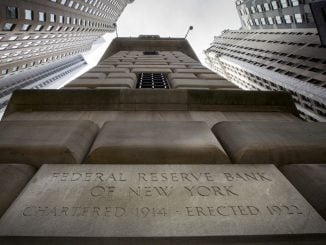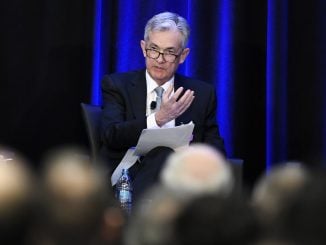FRANKFURT, Germany — Imagine a mortgage that pays you the interest, not the other way around. Or a savings account where it’s the bank, not the saver, who collects interest.
Welcome to the upside-down world of ultra-low and negative interest rates that is taking hold in many parts of the world. Now more than a decade old, economists think it could be a feature of the global economy for years to come and change the way people save and invest.
“This will mean that we must save more, work longer, and expect less,” said Olivia Mitchell, an economics professor at the Wharton Business School at the University of Pennsylvania.
The latest chapter is the drop in interest rates on some bank deposits below zero as central banks, particularly in Europe and Japan, try to support the economy amid uncertainty about trade by making borrowing cheaper to spur spending and investment. Economists think there are also longer-term factors causing low rates, such as aging populations in rich countries and high rates of savings in China and other emerging economies.
Low rates first hit in the wake of the global financial crisis. The U.S. Federal Reserve, Bank of England, Bank of Japan, and European Central Bank slashed rates close to zero. In 2014, the ECB went negative.
But the low rate environment raises questions about preserving wealth, especially for those trying to save for retirement. German newsmedia are full of stories about “penalty rates”and criticism of the European Central Bank for, as they put it, expropriating savers.
Pushing people to invest in riskier assets is part of the stimulus effect central banks are trying to impart. But there are also fears that by doing so, very low rates can cause markets to bubble up, and crash back down with painful consequences. So far, the dire predictions haven’t come true. The current bull market in U.S. stocks turns 11 years old on March 9.
Generally, low or negative interest rates can make it easier for companies and consumers to borrow, stimulating economic activity. The European Central Bank says its policies created 11 million new jobs since 2013. In the U.S., home sales have picked up as mortgage rates have fallen to 3.7%.
Now, even some home buyers can get into the negative rates game.
Denmark’s Jyske Bank offers a minus 0.5% interest mortgage while still making a profit. Customers must make monthly principal payments, but the sum they owe is whittled down month by month by the negative rate over the life of the mortgage. The bank is able to fund the mortgage by selling a bond at minus 0.5%, passing the rate to the customer, and making money on modest mortgage fees.
The Danish bank is unusual in offering the negative rate, but mortgage rates for credit-worthy borrowers are also not far above zero in Germany. For instance, a 10-year mortgage with a large down payment can carry interest of only 0.7%.
It’s worth noting that real interest rates – in other words, when official and market rates are below the rate of inflation – have been negative at several points in history, such as in the 1970s, when inflation in the developed world ran into double digits.
What’s unusual today is that the actual quoted rates are below zero and that rates have been low for so long.
Low rates make it easier for governments to borrow and build infrastructure that can spur economic growth, although political pressures have meant that Europe’s biggest economy, Germany, prefers to balance its budget than borrow. Other governments, such as Italy, are constrained by high debt.
Negative rates have not yet appeared in the United States, but they could if the economy stumbles into recession, some economists say. The Federal Reserve would almost certainly cut the short-term rate to nearly zero, as it did for seven years beginning in the Great Recession.
Since the U.S. 10-year yield is already very low by historical standards, at 1.6%, it wouldn’t take much to push it below zero, said Ryan Sweet, senior economist at Moody’s Analytics. The Fed may try to prevent it from happening, possibly by selling Treasuries, but it’s not clear they would succeed.
“We’re not immune to it,” he said. “That’s a kind of Alice in Wonderland-type world that we don’t want to go into.”
So far, Federal Reserve officials have downplayed the potential for negative rates in the U.S.
“That’s not a tool we’re looking at,” Federal Reserve Chair Jerome Powell said this during a congressional hearing. He cited research that negative rates can hurt banks’ profits and restrain their willingness to lend.
The German Economic Institute in Cologne studied multiple factors believed to cause low rates and concluded it’s not just due to central banks but represents a longer-term trend. So low or negative rates could be around for years.
With that in mind, Mitchell, the professor, persuaded her two daughters to save 18% of their salaries when they found their first jobs.
“We’re in a very different capital market regime now than in the last 30 years,” she said.



